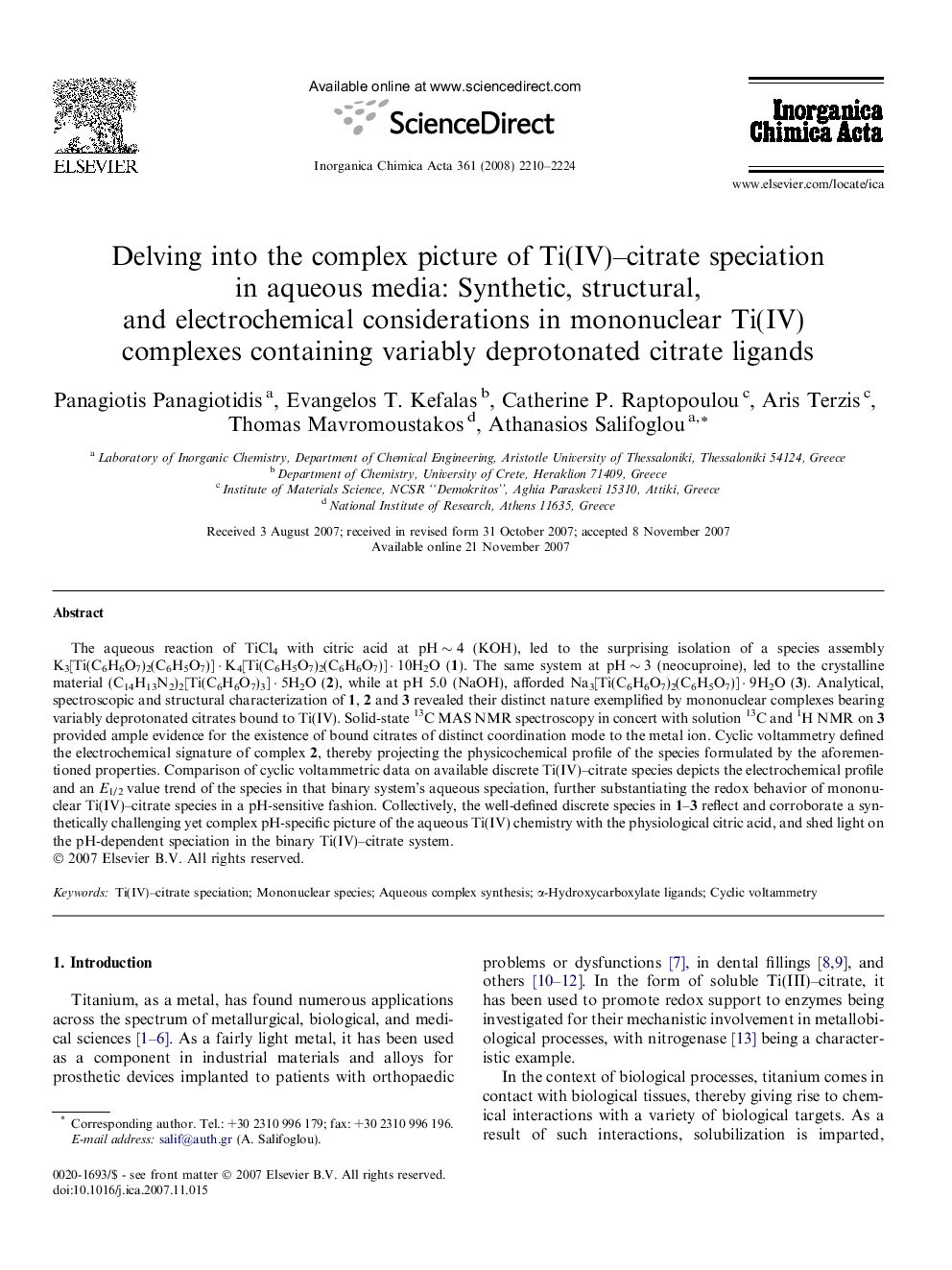| Article ID | Journal | Published Year | Pages | File Type |
|---|---|---|---|---|
| 1310117 | Inorganica Chimica Acta | 2008 | 15 Pages |
The aqueous reaction of TiCl4 with citric acid at pH ∼ 4 (KOH), led to the surprising isolation of a species assembly K3[Ti(C6H6O7)2(C6H5O7)] · K4[Ti(C6H5O7)2(C6H6O7)] · 10H2O (1). The same system at pH ∼ 3 (neocuproine), led to the crystalline material (C14H13N2)2[Ti(C6H6O7)3] · 5H2O (2), while at pH 5.0 (NaOH), afforded Na3[Ti(C6H6O7)2(C6H5O7)] · 9H2O (3). Analytical, spectroscopic and structural characterization of 1, 2 and 3 revealed their distinct nature exemplified by mononuclear complexes bearing variably deprotonated citrates bound to Ti(IV). Solid-state 13C MAS NMR spectroscopy in concert with solution 13C and 1H NMR on 3 provided ample evidence for the existence of bound citrates of distinct coordination mode to the metal ion. Cyclic voltammetry defined the electrochemical signature of complex 2, thereby projecting the physicochemical profile of the species formulated by the aforementioned properties. Comparison of cyclic voltammetric data on available discrete Ti(IV)–citrate species depicts the electrochemical profile and an E1/2 value trend of the species in that binary system’s aqueous speciation, further substantiating the redox behavior of mononuclear Ti(IV)–citrate species in a pH-sensitive fashion. Collectively, the well-defined discrete species in 1–3 reflect and corroborate a synthetically challenging yet complex pH-specific picture of the aqueous Ti(IV) chemistry with the physiological citric acid, and shed light on the pH-dependent speciation in the binary Ti(IV)–citrate system.
Graphical abstractpH-specific aqueous reactions of TiCl4 with citric acid in the presence of KOH, neocuproine and NaOH led to the unusual isolation of K3[Ti(C6H6O7)2(C6H5O7)] · K4[Ti(C6H5O7)2(C6H6O7)] · 10H2O (1), and (C14H13N2)2[Ti(C6H6O7)3] · 5H2O (2), and Na3[Ti(C6H6O7)2(C6H5O7)] · 9H2O (3). The collective physicochemical properties of 1–3 provide significant insight into the structural speciation of the binary Ti(IV)–citrate system, and correlate the degree of deprotonation of Ti(IV)-bound citrates with the pH-sensitivity of the electrochemical behavior of the aqueous mononuclear speciation participants.Figure optionsDownload full-size imageDownload as PowerPoint slide
